 I call it smooth and sickeningly so. The lyrics go down easy, the beatsfloat like a bed of feathers, and the melodies are maddeningly similarthroughout the entire album. Try meshing together the sounds of hip-hopand some fragments of 70s, 80s, and 90s pop and rock music (it's reallya very easy thing to imagine) and what might emerge is something likeBrassy. There's some funky bass rhythms that twitch and gallop here andthere and some of the beats are truly infectious but those damn vocalsare like police sirens just when I thought I'd gotten away with it.It's not that the vocals aren't performed by a talentless group ofperformers, it's just that the content is empty, repetitive, andusually far too giddy. On "Where Did You Get That Funk?" the title isrepeated a few times during the chorus while a frighteningly cleanrhythm accentuated by cleverly placed bass slaps brings to mind imagesof various creatures dancing in place somewhere within Willy Wonka'sChocolate Factory. It's hilarious to think about when the music isn't playing.Sitting through the music is a chore and after about the fourth songeverything bleeds together and ends up sound exactly the same. Whilethere are some enjoyable moments, the general attitude of every songmakes me wonder why this group hasn't appeared on a certain televisionstation and taken home ten or twelve awards yearly. Maybe I'm being abit harsh. There is, after all a minute and twelve seconds ofdistinctive rest called "Swett's Muse." In addition, "Gettin Wise" doesmanage to convey its freakiness without sending me over the edge ofsanity (at least I don't immediately reach for the skip button). By themiddle of the album, however, I was capable of predicting exactly whateach track was going to sound like. It's catchy, it's sort of funky(though in a very clean way), and is easy to swallow but it also wearsits welcome out very quickly.
I call it smooth and sickeningly so. The lyrics go down easy, the beatsfloat like a bed of feathers, and the melodies are maddeningly similarthroughout the entire album. Try meshing together the sounds of hip-hopand some fragments of 70s, 80s, and 90s pop and rock music (it's reallya very easy thing to imagine) and what might emerge is something likeBrassy. There's some funky bass rhythms that twitch and gallop here andthere and some of the beats are truly infectious but those damn vocalsare like police sirens just when I thought I'd gotten away with it.It's not that the vocals aren't performed by a talentless group ofperformers, it's just that the content is empty, repetitive, andusually far too giddy. On "Where Did You Get That Funk?" the title isrepeated a few times during the chorus while a frighteningly cleanrhythm accentuated by cleverly placed bass slaps brings to mind imagesof various creatures dancing in place somewhere within Willy Wonka'sChocolate Factory. It's hilarious to think about when the music isn't playing.Sitting through the music is a chore and after about the fourth songeverything bleeds together and ends up sound exactly the same. Whilethere are some enjoyable moments, the general attitude of every songmakes me wonder why this group hasn't appeared on a certain televisionstation and taken home ten or twelve awards yearly. Maybe I'm being abit harsh. There is, after all a minute and twelve seconds ofdistinctive rest called "Swett's Muse." In addition, "Gettin Wise" doesmanage to convey its freakiness without sending me over the edge ofsanity (at least I don't immediately reach for the skip button). By themiddle of the album, however, I was capable of predicting exactly whateach track was going to sound like. It's catchy, it's sort of funky(though in a very clean way), and is easy to swallow but it also wearsits welcome out very quickly.samples:


 Expanding on and experimenting with a given style is an artist's right.Just ask John Zorn. But what happens when an influential artists delvesinto unoriginal, boring territory? Take Pole as an obvious example.Stefan Betke's first three releases embodied a minimalist, asceticaesthetic, from the atmospheric crackles of his broken Walfdorf 4-Polefilter unit to the album names themselves. Though he may not haveinvented the notion of incorporating static sounds into a dubframework, he clearly spearheaded the musical trend that would take onsuch names as "clicks and cuts" and "glitch." By his '3' album,however, many critics felt that Betke was a one trick pony, havingmaxxed out the potential of his style. So naturally we should expectthe artist to expand and experiment. After the stylistic cues of hisrecent '90/90' and '45/45' EPs, as well as the eclectic themecompilations on his ~scape imprint, the sound of his latest full-lengthshould not surprise those who have been keeping up. Still, that doesn'tmean we shouldn't feel disappointed. Here's an artist who could havepotentially added more organic roots and reggae elements into hismusic, progressing further in the natural direction his music hadseemed to take after the first trilogy. Insteaad, we get a starkdigression, where the underlying pops and crackles have been wipedclean and out-of-place percussive, instrumental, and even vocalelements have been included. A long way down the road from the glitchmovement, this self-title album reeks of pandering to a crossover indiehip hop scene without the b-boy comprehension of a Prefuse 73 or aDabrye. Def Poetry riffs from rapper Fat Jon come across awkward andlost over Betke's uneasy new musical failure. In layman's terms, Itried to like this. Really. I did. But it sucks. It just sucks.
Expanding on and experimenting with a given style is an artist's right.Just ask John Zorn. But what happens when an influential artists delvesinto unoriginal, boring territory? Take Pole as an obvious example.Stefan Betke's first three releases embodied a minimalist, asceticaesthetic, from the atmospheric crackles of his broken Walfdorf 4-Polefilter unit to the album names themselves. Though he may not haveinvented the notion of incorporating static sounds into a dubframework, he clearly spearheaded the musical trend that would take onsuch names as "clicks and cuts" and "glitch." By his '3' album,however, many critics felt that Betke was a one trick pony, havingmaxxed out the potential of his style. So naturally we should expectthe artist to expand and experiment. After the stylistic cues of hisrecent '90/90' and '45/45' EPs, as well as the eclectic themecompilations on his ~scape imprint, the sound of his latest full-lengthshould not surprise those who have been keeping up. Still, that doesn'tmean we shouldn't feel disappointed. Here's an artist who could havepotentially added more organic roots and reggae elements into hismusic, progressing further in the natural direction his music hadseemed to take after the first trilogy. Insteaad, we get a starkdigression, where the underlying pops and crackles have been wipedclean and out-of-place percussive, instrumental, and even vocalelements have been included. A long way down the road from the glitchmovement, this self-title album reeks of pandering to a crossover indiehip hop scene without the b-boy comprehension of a Prefuse 73 or aDabrye. Def Poetry riffs from rapper Fat Jon come across awkward andlost over Betke's uneasy new musical failure. In layman's terms, Itried to like this. Really. I did. But it sucks. It just sucks. 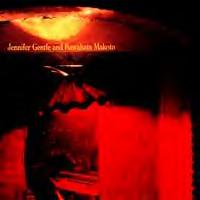 Jennifer Gentle's newest release is a live disc documenting a 2002 show in their native Italy during which they were joined on stage by the irrepressible Kawabata Makoto of Acid Mothers Temple. I'm not sure what, if anything, Makoto's monolithic acid-guitar stylings have in common with Jennifer Gentle's eclectic psych-pop. Perhaps nothing, but once the opening drones begin all such questions melt away.
Jennifer Gentle's newest release is a live disc documenting a 2002 show in their native Italy during which they were joined on stage by the irrepressible Kawabata Makoto of Acid Mothers Temple. I'm not sure what, if anything, Makoto's monolithic acid-guitar stylings have in common with Jennifer Gentle's eclectic psych-pop. Perhaps nothing, but once the opening drones begin all such questions melt away. Italian music listeners seem to have an enduring interest in rare psychedelic, progressive and kosmische music from the late 60's and 70's. There is a clutch of Italian labels like Akarma, Comet and Horizon that tirelessly pump out deluxe reissues of obscure chestnuts from America and Europe's recent rock past. Not surprisingly, a number of new groups have come out of Italy in the last few years that owe a tremendous debt to this tradition of psychedelic esoterica.
Italian music listeners seem to have an enduring interest in rare psychedelic, progressive and kosmische music from the late 60's and 70's. There is a clutch of Italian labels like Akarma, Comet and Horizon that tirelessly pump out deluxe reissues of obscure chestnuts from America and Europe's recent rock past. Not surprisingly, a number of new groups have come out of Italy in the last few years that owe a tremendous debt to this tradition of psychedelic esoterica.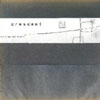 Comprised of members of both Movietone and Flying Saucer Attack,Crescent was born of the spacy post-rock scene that arose from Bristolin the mid-1990s. Vastly less interesting than either of those bands,Crescent has released a small handful of recordings since itsinception. Their latest, and first for Fat Cat, recalls the playfulorgan melodies and percussion of Pram; the slightly trippy, moody brassinflections of Legendary Pink Dots; and the mournful, jarring vocals ofJoy Division. This may sound like a great formula, but somehow Crescentjust doesn't pull it off. Overall, the raw, rough sound of By the Roads and the Fieldsmakes for a thought-provoking atmosphere, but ultimately does notcontribute anything to make the album compelling. The vocals of MattJones in particular tend to drag the music down. His monotone, sullenpresentation of the ponderous lyrics makes them far too heavy for thealbum's strong point, the sparse instrumentation. "Mica," the besttrack, seems to be so largely due to the fact that it doesn't havevocals on it. Devotees of Flying Saucer Attack and the subsequentprojects it spawned would be wise to wait for this fall's forthcomingMovietone record rather than pick up Crescent's latest offering.
Comprised of members of both Movietone and Flying Saucer Attack,Crescent was born of the spacy post-rock scene that arose from Bristolin the mid-1990s. Vastly less interesting than either of those bands,Crescent has released a small handful of recordings since itsinception. Their latest, and first for Fat Cat, recalls the playfulorgan melodies and percussion of Pram; the slightly trippy, moody brassinflections of Legendary Pink Dots; and the mournful, jarring vocals ofJoy Division. This may sound like a great formula, but somehow Crescentjust doesn't pull it off. Overall, the raw, rough sound of By the Roads and the Fieldsmakes for a thought-provoking atmosphere, but ultimately does notcontribute anything to make the album compelling. The vocals of MattJones in particular tend to drag the music down. His monotone, sullenpresentation of the ponderous lyrics makes them far too heavy for thealbum's strong point, the sparse instrumentation. "Mica," the besttrack, seems to be so largely due to the fact that it doesn't havevocals on it. Devotees of Flying Saucer Attack and the subsequentprojects it spawned would be wise to wait for this fall's forthcomingMovietone record rather than pick up Crescent's latest offering.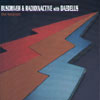 Asthe Weather, Los Angeles MCs Busdriver and Radioinactive dispense quickcut, weaving and rapid-fire rhymes with free-association styled contentranging from humorous to brilliant. Along with sample-basedcompositions and production from studio ace Daedelus, the trio havecollaborated on The Weather for sixty minutes of blisteringrhymes and hip hop meets clever musical arrangements, wierdness andsatire. "Pen's Oil" opens with a 18's inspired orchestration set tofunky drums and laid-back piano riffing that shifts to double time tokeep up with the speedy vocal dispatching. The playfully titled "CarlWeathers" consists of a full backing that includes machine beats,percussion and upright bass with a chorus that sings a line from atypical weather report while the duo convey simultaneous rhymes andbreak away for individual segments. A sampled audience clapping outsyncopated rhythms sets "Fine For A Robot" in motion for a soulfultrack when Busdriver, tongue in cheek, beautifully sings a loving odeto a machine. It then switches to drums and piano flourishes whenRadioinactive gets the sassy rhymes going for the robot girl. Daedelus'production on "Raffle Ticket Blues" employs dark, minor key jazz piano,bass and brushed drums segments with tinny machine beats forRadioinactive's wordplay in which the piece's sections are clearlymarked off based on the words per minute. The Weather's interestinglyrics and vocal talents of leaving no space unfilled are equallymatched by their ability to let lines breathe by leaving space betweenwords; all complemented nicely by Daedelus' rhythmic soundmanipulation.
Asthe Weather, Los Angeles MCs Busdriver and Radioinactive dispense quickcut, weaving and rapid-fire rhymes with free-association styled contentranging from humorous to brilliant. Along with sample-basedcompositions and production from studio ace Daedelus, the trio havecollaborated on The Weather for sixty minutes of blisteringrhymes and hip hop meets clever musical arrangements, wierdness andsatire. "Pen's Oil" opens with a 18's inspired orchestration set tofunky drums and laid-back piano riffing that shifts to double time tokeep up with the speedy vocal dispatching. The playfully titled "CarlWeathers" consists of a full backing that includes machine beats,percussion and upright bass with a chorus that sings a line from atypical weather report while the duo convey simultaneous rhymes andbreak away for individual segments. A sampled audience clapping outsyncopated rhythms sets "Fine For A Robot" in motion for a soulfultrack when Busdriver, tongue in cheek, beautifully sings a loving odeto a machine. It then switches to drums and piano flourishes whenRadioinactive gets the sassy rhymes going for the robot girl. Daedelus'production on "Raffle Ticket Blues" employs dark, minor key jazz piano,bass and brushed drums segments with tinny machine beats forRadioinactive's wordplay in which the piece's sections are clearlymarked off based on the words per minute. The Weather's interestinglyrics and vocal talents of leaving no space unfilled are equallymatched by their ability to let lines breathe by leaving space betweenwords; all complemented nicely by Daedelus' rhythmic soundmanipulation.  Journalists invent music sub-genres when they get tired of comparingmusical artists to another musical act. While Icelander OlafurJosephsson is once again showcasing his amazing playing, arrangement,and compositional talents for his second full-length disc as StafrænHákon, it's painfully difficult to escape the comparisons to Mogwai.(In addition, it's rather ironic than Josephsson now makes Glasgow hishome.) All of his music is instrumental once again on this, his firstrelease to be put out through somebody other than himself. For tensongs, the guitar and effects-driven melodies are a blissful wash ofdrifting audio landscapes. It's quite easy to get completely lost inthe music's beauty. Numerous songs like "Tætir rækju" pulse with asubtle beat and move within somewhat predictable, and enjoyable whilebeat-less tunes like "Grifflur" are chilling and turbulent like thebright moonlight reflecting off of cold, icy waters. With the additionof organic drum work and chiming sounds, however, songs like the closer"Safi" are unmistakably resemblant of Mogwai's tunes from their EP +release. There's nothing unpleasant about any of the songs, but what'slacking perhaps is an element of the unexpected, the unpredictabile, orchaos. There's so much that can be done with this music, but Josephssonchooses a route which leaves most of the music completely as is. Whileit may reduce the chances of being accused of being gimmicky, it doessound derivative. Skvettir Edik à Ref is a good second albumand will surely please a ton of fans of the more gentle side ofinstrumental guitar music. There is a load of potential for StefrænHákon to be amazing but it's just not quite at that level yet.
Journalists invent music sub-genres when they get tired of comparingmusical artists to another musical act. While Icelander OlafurJosephsson is once again showcasing his amazing playing, arrangement,and compositional talents for his second full-length disc as StafrænHákon, it's painfully difficult to escape the comparisons to Mogwai.(In addition, it's rather ironic than Josephsson now makes Glasgow hishome.) All of his music is instrumental once again on this, his firstrelease to be put out through somebody other than himself. For tensongs, the guitar and effects-driven melodies are a blissful wash ofdrifting audio landscapes. It's quite easy to get completely lost inthe music's beauty. Numerous songs like "Tætir rækju" pulse with asubtle beat and move within somewhat predictable, and enjoyable whilebeat-less tunes like "Grifflur" are chilling and turbulent like thebright moonlight reflecting off of cold, icy waters. With the additionof organic drum work and chiming sounds, however, songs like the closer"Safi" are unmistakably resemblant of Mogwai's tunes from their EP +release. There's nothing unpleasant about any of the songs, but what'slacking perhaps is an element of the unexpected, the unpredictabile, orchaos. There's so much that can be done with this music, but Josephssonchooses a route which leaves most of the music completely as is. Whileit may reduce the chances of being accused of being gimmicky, it doessound derivative. Skvettir Edik à Ref is a good second albumand will surely please a ton of fans of the more gentle side ofinstrumental guitar music. There is a load of potential for StefrænHákon to be amazing but it's just not quite at that level yet. 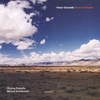 Combining cultural (i.e., traditional) instrumentation and phrasingwith more contemporary music always ends up producing something far toonew age and cheesey. It's a shame, especially when left as seperateentities, each can be quite gorgeous and ear-opening. Victor Chorobikand company have attempted to fuse various Tibetan sounds with those ofjazz and classical descent. The results are, at best, mixed andself-limiting. Exotic flutes are mixed with soprano and tenorsaxophones and each makes the other stand out like a sore thumb: thetwo simply don't fuse as well as the musicians would like to think.Lengthy tracks are accompanied by endlessly repeating drum patternswhile easy-going and laid back melodies shine over them, only themelodies aren't all that exciting or attention-grabbing. When thetraditional instrumentation and structures are left to themselves theresults are a little different. Chants, spoken-word passages, woodenflutes, and various guitars all mix to form something that borders onthe spiritual; they at least sound as if they are of a religiousbackground. Repeated listens will reveal that the native instrumentsare never truly left alone, however. There's always a keyboard of somekind attempting to add to the mystery and awe that native (or justplain alien) music, when completely naked, so often has the power ofevoking. The result is a pure stinking cheese that sucks the life outof the source material. This is nowhere more evident than on "Mantra ofGuru Rinpoche." A lone chant is performed only to be interrupted by acompletely pointless combination of shimmering keyboard sounds and lowbass throbbings. I've never been a big fan of these kinds of culturalcrossings precisely because they rob the uniqueness out of eachother.That's not to say that every single one of them are doomed to failure,but hearing the original stuff as documented in the field always endsup inspiring me more than what is meticulously calculated andconsidered within the studio. There is some beauty to be found here,but be prepared to be offended along the way. -
Combining cultural (i.e., traditional) instrumentation and phrasingwith more contemporary music always ends up producing something far toonew age and cheesey. It's a shame, especially when left as seperateentities, each can be quite gorgeous and ear-opening. Victor Chorobikand company have attempted to fuse various Tibetan sounds with those ofjazz and classical descent. The results are, at best, mixed andself-limiting. Exotic flutes are mixed with soprano and tenorsaxophones and each makes the other stand out like a sore thumb: thetwo simply don't fuse as well as the musicians would like to think.Lengthy tracks are accompanied by endlessly repeating drum patternswhile easy-going and laid back melodies shine over them, only themelodies aren't all that exciting or attention-grabbing. When thetraditional instrumentation and structures are left to themselves theresults are a little different. Chants, spoken-word passages, woodenflutes, and various guitars all mix to form something that borders onthe spiritual; they at least sound as if they are of a religiousbackground. Repeated listens will reveal that the native instrumentsare never truly left alone, however. There's always a keyboard of somekind attempting to add to the mystery and awe that native (or justplain alien) music, when completely naked, so often has the power ofevoking. The result is a pure stinking cheese that sucks the life outof the source material. This is nowhere more evident than on "Mantra ofGuru Rinpoche." A lone chant is performed only to be interrupted by acompletely pointless combination of shimmering keyboard sounds and lowbass throbbings. I've never been a big fan of these kinds of culturalcrossings precisely because they rob the uniqueness out of eachother.That's not to say that every single one of them are doomed to failure,but hearing the original stuff as documented in the field always endsup inspiring me more than what is meticulously calculated andconsidered within the studio. There is some beauty to be found here,but be prepared to be offended along the way. - 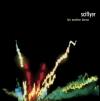 It used to be that when a band was called shoegazer music it was descriptive enough to illustrate exactly what someone would hear when they put the album on. These days, there are so many bands recording music that passes as shoegazer that it's almost evolved into another genre entirely, and none of it really resembles the original sound. Unfortunately, most of the bands in this genre possess little originality and more than their fair share of mediocrity. Sciflyer, hot off two self-released EPs, prove on their debut that there is still a chance for this kind of music while also displaying everything that's wrong with the psychedelic rock scene.
It used to be that when a band was called shoegazer music it was descriptive enough to illustrate exactly what someone would hear when they put the album on. These days, there are so many bands recording music that passes as shoegazer that it's almost evolved into another genre entirely, and none of it really resembles the original sound. Unfortunately, most of the bands in this genre possess little originality and more than their fair share of mediocrity. Sciflyer, hot off two self-released EPs, prove on their debut that there is still a chance for this kind of music while also displaying everything that's wrong with the psychedelic rock scene.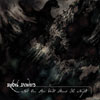 In the office where I worked this summer, the main lobby featured anenormous piece by artist Frank Stella. The piece was large, probablytwenty feet tall, and consisted of a series of colored boxes, enclosedin a thick orange boarded and symmetrically mirrored on the oppositeside. These are the kind of works, abstract shapes and colors, thatmade Stella and his minimalist style known in the art world. Everymorning I would step off the elevators and be cast in the imaginaryshadow of this walled piece, unable to ignore it, and think to myself,"Is it me, or is this a total fraud?" I'm no art critic, but for me thepiece did nothing. It evoked no feelings and no deep thoughts, only theconfusion that a crayola palette and attention to straight lines couldto some extent, make one renowned. So excuse me for being somewhat warywhen Rebel Powers was described to me as minimalist. Rebel Powers is acollaboration between Acid Mothers Temple's Kawabata Makoto, CottonCasino, Koizumi Hajime and Telstar Ponies' David Keenan. Thesemusicians came together to perform two long instrumental tracks, withonly incidental overdubbing to create what they identify as minimalistexcursions. "We Are For the Dark" is the first volley, and quicklydispelled my initial fears. Guitars drone against each other as ghastlymoans supplied by a sarangi, a classical Indian bowed instrument.Percussion drips in and out of the shambling piece as it oozes forward.The darkness Rebel Powers aims to provide is very apparent, and "We AreFor the Dark" lays out in its patient tones a spooky, malevolentatmosphere that only builds in intensty and effectiveness as the trackcontinues. The instruments seem to grind against one another like therusty components of a machine lurching to life and slowly gaining backits momentum and force. Errant shards of noise shoot out into the stewbefore disappearing beneath it. In the tail end of its long duration,the improvisation reaches a more insistent peak before petering out ina collision of clangs and dwindling washes. The track is not spare orsparse, and never does it feel overly repetitive (though in essence ittreads the same core for twenty five minutes) or boring. It has a depthand body that draws you in and wraps you up in the imagery; it doesn'tleave you staring at it confounded. Unfortunately, the next track isnot nearly as successful. "Our God is A Mighty Fortress" mills aboutaimlessly over a repetitive pattern for far too long. While the firsttrack transported me to dark forests, rain soaked dirt roads andlurking unknowns in the brush just behind, the second track brings meright back to my office, staring up at the Stella and wondering tomyself what the big deal is. As the track progresses, it does improveslightly, with a more clean, more relaxed attitude than the first, butthe loss of energy and excitement that the first ten minutes or so is adevastating hit to the whole. Had the tracks been reversed in order, Imay have been more forgiving, but the ideas as presented took the windout of my enthusiasm. Such is the risk with improvised music. Sometimesideas don't pan out and paths taken more often lead to dead ends thanexplosions of brilliance, but when they do the trip is entirely worthit. As demonstrated by Rebel Powers, minimalism can mean more thaneconomy, and bleak can be busy, but that asceticism is a trap that isdifficult to escape.
In the office where I worked this summer, the main lobby featured anenormous piece by artist Frank Stella. The piece was large, probablytwenty feet tall, and consisted of a series of colored boxes, enclosedin a thick orange boarded and symmetrically mirrored on the oppositeside. These are the kind of works, abstract shapes and colors, thatmade Stella and his minimalist style known in the art world. Everymorning I would step off the elevators and be cast in the imaginaryshadow of this walled piece, unable to ignore it, and think to myself,"Is it me, or is this a total fraud?" I'm no art critic, but for me thepiece did nothing. It evoked no feelings and no deep thoughts, only theconfusion that a crayola palette and attention to straight lines couldto some extent, make one renowned. So excuse me for being somewhat warywhen Rebel Powers was described to me as minimalist. Rebel Powers is acollaboration between Acid Mothers Temple's Kawabata Makoto, CottonCasino, Koizumi Hajime and Telstar Ponies' David Keenan. Thesemusicians came together to perform two long instrumental tracks, withonly incidental overdubbing to create what they identify as minimalistexcursions. "We Are For the Dark" is the first volley, and quicklydispelled my initial fears. Guitars drone against each other as ghastlymoans supplied by a sarangi, a classical Indian bowed instrument.Percussion drips in and out of the shambling piece as it oozes forward.The darkness Rebel Powers aims to provide is very apparent, and "We AreFor the Dark" lays out in its patient tones a spooky, malevolentatmosphere that only builds in intensty and effectiveness as the trackcontinues. The instruments seem to grind against one another like therusty components of a machine lurching to life and slowly gaining backits momentum and force. Errant shards of noise shoot out into the stewbefore disappearing beneath it. In the tail end of its long duration,the improvisation reaches a more insistent peak before petering out ina collision of clangs and dwindling washes. The track is not spare orsparse, and never does it feel overly repetitive (though in essence ittreads the same core for twenty five minutes) or boring. It has a depthand body that draws you in and wraps you up in the imagery; it doesn'tleave you staring at it confounded. Unfortunately, the next track isnot nearly as successful. "Our God is A Mighty Fortress" mills aboutaimlessly over a repetitive pattern for far too long. While the firsttrack transported me to dark forests, rain soaked dirt roads andlurking unknowns in the brush just behind, the second track brings meright back to my office, staring up at the Stella and wondering tomyself what the big deal is. As the track progresses, it does improveslightly, with a more clean, more relaxed attitude than the first, butthe loss of energy and excitement that the first ten minutes or so is adevastating hit to the whole. Had the tracks been reversed in order, Imay have been more forgiving, but the ideas as presented took the windout of my enthusiasm. Such is the risk with improvised music. Sometimesideas don't pan out and paths taken more often lead to dead ends thanexplosions of brilliance, but when they do the trip is entirely worthit. As demonstrated by Rebel Powers, minimalism can mean more thaneconomy, and bleak can be busy, but that asceticism is a trap that isdifficult to escape.  This album is staggering in its creativity, even though it's probablythe most pop-focused of Rollerball's releases. They bring the funkinfluence, which has always been lurking, closer to the fore quitetastefully, with propulsive drums and full-bodied bass inspiringmovement, but the highlight of their music is definitely thesuper-catchy lyrics and melodies. Stabbing, anthemic horn leads andsmoky piano lines accompany their vaguely dadaist cabaret vocals,singing seemingly lighthearted verses about clarinet samples and ourforefathers wearing drag, but the sense of tension that their dramaticpresentation inspires is remarkable. Rollerball's little details oforganic experimentation and everything-including-the-kitchen-sinknoisemaking are still present in some form, but they're more tightlywoven into the songs themselves, such that the album is full ofinteresting sounds throughout, but free from gratuitously tacked onelements. Still, this is a far cry from the extended free-noise oftheir earlier works. Tracks like "66 Deadhead Spies" and "Starling"play up the loungey aspects—shared male/female vocals and slick pianoinstrumentation; while a steady bassline anchors "Mike's Hind," thesole instrumental piece, as various sound effects and improvisedphrases float through the mix. "Spine Delay" seems to be a shout out toall dudes in the audience with its deranged, at times hyper-falsetto,singing, until the horror-movie organ emerges and the band settles on amellow groove. The album ends with a suitably incomprehensible spokenword piece about nature. Rollerball are an entertaining and interestingband, and it's great to hear further development of their refreshinglyunique pop music.
This album is staggering in its creativity, even though it's probablythe most pop-focused of Rollerball's releases. They bring the funkinfluence, which has always been lurking, closer to the fore quitetastefully, with propulsive drums and full-bodied bass inspiringmovement, but the highlight of their music is definitely thesuper-catchy lyrics and melodies. Stabbing, anthemic horn leads andsmoky piano lines accompany their vaguely dadaist cabaret vocals,singing seemingly lighthearted verses about clarinet samples and ourforefathers wearing drag, but the sense of tension that their dramaticpresentation inspires is remarkable. Rollerball's little details oforganic experimentation and everything-including-the-kitchen-sinknoisemaking are still present in some form, but they're more tightlywoven into the songs themselves, such that the album is full ofinteresting sounds throughout, but free from gratuitously tacked onelements. Still, this is a far cry from the extended free-noise oftheir earlier works. Tracks like "66 Deadhead Spies" and "Starling"play up the loungey aspects—shared male/female vocals and slick pianoinstrumentation; while a steady bassline anchors "Mike's Hind," thesole instrumental piece, as various sound effects and improvisedphrases float through the mix. "Spine Delay" seems to be a shout out toall dudes in the audience with its deranged, at times hyper-falsetto,singing, until the horror-movie organ emerges and the band settles on amellow groove. The album ends with a suitably incomprehensible spokenword piece about nature. Rollerball are an entertaining and interestingband, and it's great to hear further development of their refreshinglyunique pop music. The second of the Anomalous co-releases is an oddly indefinable, "accidental" remix of Nurse With Wound's first album Chance Meeting on a Dissecting Table of a Sewing Machine and an Umbrella by Matt Waldron of irr.(app.)ext. Chance Meetingis a landmark record of deranged psychedelic proto-industrialexperimentation. Matt Waldron's irr.(app.)ext. has produced some of themost exciting audio surrealism to come along in recent years. However,this disc is not the meeting of these two great minds that one mightexpect. As the story goes, Waldron was making a tape-to-tape dupe ofthe original United Dairies cassette, when his dysfunctional taperecorder began to warp and mutate the source material, producing itsown interpolation of the Nurse classic. This kind of accidentallydeteriorating tape idea has recently been used to much more subtle andingenius effect on William Basinski's Disintegration Loops series.Although I can imagine that the warbles and mutations caused by thistape recorder mishap might have appealed to Matt Waldron and StevenStapleton, its pleasures are truly ephemeral. All the CD boils down tois an inferior, hiss-heavy transfer of the original album, with somerandom time-stretching, glitches and wobbles that do very little toincrease interest for the listener. Although I admire the love foraccident and synchronicity that led Stapleton and Waldron to releasethis material, I don't think that it will hold much interest for theaverage listener. This review certainly won't discourage those whoobsessively collect everything issued from the Nurse With Wound camp.But for those who are just a little more selective about this stuff, Ithink I can safely suggest that you steer clear of this unique butultimately inane piece of conceptual audio.
The second of the Anomalous co-releases is an oddly indefinable, "accidental" remix of Nurse With Wound's first album Chance Meeting on a Dissecting Table of a Sewing Machine and an Umbrella by Matt Waldron of irr.(app.)ext. Chance Meetingis a landmark record of deranged psychedelic proto-industrialexperimentation. Matt Waldron's irr.(app.)ext. has produced some of themost exciting audio surrealism to come along in recent years. However,this disc is not the meeting of these two great minds that one mightexpect. As the story goes, Waldron was making a tape-to-tape dupe ofthe original United Dairies cassette, when his dysfunctional taperecorder began to warp and mutate the source material, producing itsown interpolation of the Nurse classic. This kind of accidentallydeteriorating tape idea has recently been used to much more subtle andingenius effect on William Basinski's Disintegration Loops series.Although I can imagine that the warbles and mutations caused by thistape recorder mishap might have appealed to Matt Waldron and StevenStapleton, its pleasures are truly ephemeral. All the CD boils down tois an inferior, hiss-heavy transfer of the original album, with somerandom time-stretching, glitches and wobbles that do very little toincrease interest for the listener. Although I admire the love foraccident and synchronicity that led Stapleton and Waldron to releasethis material, I don't think that it will hold much interest for theaverage listener. This review certainly won't discourage those whoobsessively collect everything issued from the Nurse With Wound camp.But for those who are just a little more selective about this stuff, Ithink I can safely suggest that you steer clear of this unique butultimately inane piece of conceptual audio.  The English esoteric artists Current 93, Nurse With Wound and Coil —recently canonized in David Keenan's England's Hidden Reverse — areobviously intelligent, always creative, and often revolutionary. Ifanything bad could be said about these artists, it would be that theysuffer from a kind of record release diarrhea. Their absurdly prolificrelease schedules litter the world with pointless EPs, singles andlimited-edition releases that are immediately snatched up bycollectors, but often suffer from a dearth of worthwhile musicalcontent. Recent flagrant examples have been Current 93's The Great in the Small CD and the Maldoror is DeadEP. Both of these CDs contained no new musical content, and left mescratching my head wondering how I was hoodwinked into purchasing them.This new little artifact, one of a pair of discs released as apartnership between United Durtro and Anomalous, contains two lengthytracks of sound material from 1985's In Mentrual Night, recently given a remix treatment by Steven Stapleton. In Mentrual Nightwas one of David Tibet's final works from Current 93's "spooky loop"period, and also one of the best. The atmospheric mixture of chanting,operatic scales, chain-rattling and musique concrete' tape tricks was asuperior final chapter to Current 93's noisescape phase. Why revisitthis material almost 20 years later? These remixes were commissioned tobe used as opening music to Current 93's recent shows in San Fransisco.Because these pieces were to be used primarily for background music,Stapleton has decided to muddy the mix, making it impossible todistinguish the voice and noise elements, turning the music into murky,nebulous ambient soundscapes that fill the room with atmosphere, butdon't share the unfolding, jarring drama of the original music. Thesounds share the same kind of distant, dreamlike uneasiness of earlierCurrent 93 tracks like "The Dreammoves of the Sleeping King," withhalf-remembered audible fragments of sound that trigger strangefeelings of nostalgia and/or deja vu' in the listener. Both tracks arequite good, but whether or not they are worth the price of admissiondepends upon your level of Current 93 obsessiveness.
The English esoteric artists Current 93, Nurse With Wound and Coil —recently canonized in David Keenan's England's Hidden Reverse — areobviously intelligent, always creative, and often revolutionary. Ifanything bad could be said about these artists, it would be that theysuffer from a kind of record release diarrhea. Their absurdly prolificrelease schedules litter the world with pointless EPs, singles andlimited-edition releases that are immediately snatched up bycollectors, but often suffer from a dearth of worthwhile musicalcontent. Recent flagrant examples have been Current 93's The Great in the Small CD and the Maldoror is DeadEP. Both of these CDs contained no new musical content, and left mescratching my head wondering how I was hoodwinked into purchasing them.This new little artifact, one of a pair of discs released as apartnership between United Durtro and Anomalous, contains two lengthytracks of sound material from 1985's In Mentrual Night, recently given a remix treatment by Steven Stapleton. In Mentrual Nightwas one of David Tibet's final works from Current 93's "spooky loop"period, and also one of the best. The atmospheric mixture of chanting,operatic scales, chain-rattling and musique concrete' tape tricks was asuperior final chapter to Current 93's noisescape phase. Why revisitthis material almost 20 years later? These remixes were commissioned tobe used as opening music to Current 93's recent shows in San Fransisco.Because these pieces were to be used primarily for background music,Stapleton has decided to muddy the mix, making it impossible todistinguish the voice and noise elements, turning the music into murky,nebulous ambient soundscapes that fill the room with atmosphere, butdon't share the unfolding, jarring drama of the original music. Thesounds share the same kind of distant, dreamlike uneasiness of earlierCurrent 93 tracks like "The Dreammoves of the Sleeping King," withhalf-remembered audible fragments of sound that trigger strangefeelings of nostalgia and/or deja vu' in the listener. Both tracks arequite good, but whether or not they are worth the price of admissiondepends upon your level of Current 93 obsessiveness. Brian Foote has been operating the Outward Music Company out of Portland, Oregon for a few years. Their small number of releases have included some singles and full-length releases by Signaldrift, Solenoid, Pulse Programming, and Strategy. Nudge is the result of Foote's collaborations with members of those bands along with people from other Portland-based groups like Fontanelle, Jackie-O Motherfucker, and Nice Nice. While I have to admit that my impression of the outputs by the aforementioned artists and groups have always been rather lukewarm, the combination assembled here far supersedes any expectations.
Brian Foote has been operating the Outward Music Company out of Portland, Oregon for a few years. Their small number of releases have included some singles and full-length releases by Signaldrift, Solenoid, Pulse Programming, and Strategy. Nudge is the result of Foote's collaborations with members of those bands along with people from other Portland-based groups like Fontanelle, Jackie-O Motherfucker, and Nice Nice. While I have to admit that my impression of the outputs by the aforementioned artists and groups have always been rather lukewarm, the combination assembled here far supersedes any expectations. Some time ago, while sending out Rhys Chatham's "Die Donnergotter" overthe college airwaves, I got a call. I had expected another barelycontained "WHAT IS THIS?? IT'S...AWESOME!," which had become theregular response (maybe I played the song too much). Instead, my"Hello?" received the sleepyheaded reply, "Is this, uh, Trans Am?"Aside from the fact that a first-time Chatham listener will have beenexposed to legions of his influenced before hearing the man himself(most hear even Branca before his mentor), Chatham's work sounds a bitold-fashioned, ironically, because of what it has accomplished. Hisfusion of post-modern art music ("contemporary classical," "new-music,"whatever) with rock music sounds great, but it does not create worksthat enjoy unlimited movement between their poles of origin. Chathamwrites extensively about the critical climate of the '70s and '80s inthe 140-page book that accompanies An Angel Moves Too Fast to See,describing in detail the newfound flexibility and freedom along genrelines that composers enjoyed at the time. And while this all makessense, explaining how he came to write the music and perform this newmusic, it does not change the fact that Chatham's music will alwaysbelong to the classical tradition. This is not to say that the composerhad not gone to great lengths to separate his music from the universitysound lab, the ivory tower of academicism threatening art music throughthe late '60s. If anything, Chatham's music is not challenging enough.Still, despite his enlisting New York rock scene players (ThurstonMoore and Lee Renaldo among others) to perform his music and choosingto perform in many popular NY rock clubs, Chatham remains a "composer."The length and scope of his works contrast rock composition, especiallypunk rock composition; likewise, the spectacle and performer/audiencedynamic of a Chatham piece is necessarily different than that of aRamones show. Whether this would or would not be the case in a perfectworld cannot change Chatham's place as an "art-music composer" (who,yes, utilized rock instrumentation and technique). As such, itsimpossible to approach his work without any preconceptions about theperformative aspect of the music or without imagining its place withina lineage, however ill-conceived, of "important" 20th centurycompositions.
Some time ago, while sending out Rhys Chatham's "Die Donnergotter" overthe college airwaves, I got a call. I had expected another barelycontained "WHAT IS THIS?? IT'S...AWESOME!," which had become theregular response (maybe I played the song too much). Instead, my"Hello?" received the sleepyheaded reply, "Is this, uh, Trans Am?"Aside from the fact that a first-time Chatham listener will have beenexposed to legions of his influenced before hearing the man himself(most hear even Branca before his mentor), Chatham's work sounds a bitold-fashioned, ironically, because of what it has accomplished. Hisfusion of post-modern art music ("contemporary classical," "new-music,"whatever) with rock music sounds great, but it does not create worksthat enjoy unlimited movement between their poles of origin. Chathamwrites extensively about the critical climate of the '70s and '80s inthe 140-page book that accompanies An Angel Moves Too Fast to See,describing in detail the newfound flexibility and freedom along genrelines that composers enjoyed at the time. And while this all makessense, explaining how he came to write the music and perform this newmusic, it does not change the fact that Chatham's music will alwaysbelong to the classical tradition. This is not to say that the composerhad not gone to great lengths to separate his music from the universitysound lab, the ivory tower of academicism threatening art music throughthe late '60s. If anything, Chatham's music is not challenging enough.Still, despite his enlisting New York rock scene players (ThurstonMoore and Lee Renaldo among others) to perform his music and choosingto perform in many popular NY rock clubs, Chatham remains a "composer."The length and scope of his works contrast rock composition, especiallypunk rock composition; likewise, the spectacle and performer/audiencedynamic of a Chatham piece is necessarily different than that of aRamones show. Whether this would or would not be the case in a perfectworld cannot change Chatham's place as an "art-music composer" (who,yes, utilized rock instrumentation and technique). As such, itsimpossible to approach his work without any preconceptions about theperformative aspect of the music or without imagining its place withina lineage, however ill-conceived, of "important" 20th centurycompositions.  On their last album, A Silver Mt. Zion grew to the Memorial Orchestra and Tra-la-la Band. This time around the players are the same six stalwarts, and they've added a choir for some extra flavor. As the name and roster grows for Efrim's ever necessary ensemble so also does the music become more and more powerful and damaging. Their songs seem to be getting closer and closer to the gy!be motif, with delicate, fluid, and lovely passages that explode into pounding earthquake-threatening dirges of grandeur. The only main difference is the increasingly awkward Efrim vocals, though it feels like at least he is more comfortable with them on each song, even if they're not any easier to listen to.
On their last album, A Silver Mt. Zion grew to the Memorial Orchestra and Tra-la-la Band. This time around the players are the same six stalwarts, and they've added a choir for some extra flavor. As the name and roster grows for Efrim's ever necessary ensemble so also does the music become more and more powerful and damaging. Their songs seem to be getting closer and closer to the gy!be motif, with delicate, fluid, and lovely passages that explode into pounding earthquake-threatening dirges of grandeur. The only main difference is the increasingly awkward Efrim vocals, though it feels like at least he is more comfortable with them on each song, even if they're not any easier to listen to.  Sometimes people just have to be cruel, especially when they're asked to listen to the worst album they've heard in a decade. Anyone who writes reviews will eventually get used to reading all kinds of press releases, from the useful detailed biographic ones to the amusingly erroneous ones to the ones that are quite clearly ridiculous hype for vapid old rope with no substance whatsoever. If The Fly magazine is calling a band genius then any music lover with any aesthetic sense whatsoever will see red hype alarm bells flashing. (The Fly is a faux-fanzine, set up by London based PR wafflers and is given away free at various venues throughout the UK, so that drunk faux-indie kids have something to use when the toilet paper runs out.)
Sometimes people just have to be cruel, especially when they're asked to listen to the worst album they've heard in a decade. Anyone who writes reviews will eventually get used to reading all kinds of press releases, from the useful detailed biographic ones to the amusingly erroneous ones to the ones that are quite clearly ridiculous hype for vapid old rope with no substance whatsoever. If The Fly magazine is calling a band genius then any music lover with any aesthetic sense whatsoever will see red hype alarm bells flashing. (The Fly is a faux-fanzine, set up by London based PR wafflers and is given away free at various venues throughout the UK, so that drunk faux-indie kids have something to use when the toilet paper runs out.)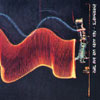 A lot of electronic-based musicians and producers make reference tojazz music and its instrumentation in their sampling and arranging;mostly from the post-bop and cool eras. For a good chunk of this disc,Los Angeles hip hop producer Daddy Kev (aka Kevin Marques Moo)stretches the backing tracks to the far reaches in a true free-jazzspirit. Kev combines soloing drums, upright bass, funky loops, guitarruns and other ambient sounds with precise turntable manipulationprovided by D-Styles. The unique voice of MC Awol One plays off ofthese tracks with free-association/spoken word riffs that range fromhumorous to serious for a new take on beat poetry (no pun intended).Tracks such as "Finger Paint with Bloodlike War Paint," "Grey Skys inPsycho-Delic RGB," and "Buyin' Friends on Ebay" kick along to steadyrhymes and beats with quotes from orchestras, saxophone and piano."Idiot Savant Autistic Delivery" opens with a spoken-word sample aboutplaying free music that Awol One throws in his own dialogue to give asense of conversation. Steady hi-hat lays down a groove for FenderRhodes and bass to convey an all too brief 70s soundtrack for a copshow chase sequence that is scratched with vocal samples. As jazz andrap are said to be closely related, it was just a matter of time beforefree jazz and fusion made their way into the hybrid of hip hop soprominently.
A lot of electronic-based musicians and producers make reference tojazz music and its instrumentation in their sampling and arranging;mostly from the post-bop and cool eras. For a good chunk of this disc,Los Angeles hip hop producer Daddy Kev (aka Kevin Marques Moo)stretches the backing tracks to the far reaches in a true free-jazzspirit. Kev combines soloing drums, upright bass, funky loops, guitarruns and other ambient sounds with precise turntable manipulationprovided by D-Styles. The unique voice of MC Awol One plays off ofthese tracks with free-association/spoken word riffs that range fromhumorous to serious for a new take on beat poetry (no pun intended).Tracks such as "Finger Paint with Bloodlike War Paint," "Grey Skys inPsycho-Delic RGB," and "Buyin' Friends on Ebay" kick along to steadyrhymes and beats with quotes from orchestras, saxophone and piano."Idiot Savant Autistic Delivery" opens with a spoken-word sample aboutplaying free music that Awol One throws in his own dialogue to give asense of conversation. Steady hi-hat lays down a groove for FenderRhodes and bass to convey an all too brief 70s soundtrack for a copshow chase sequence that is scratched with vocal samples. As jazz andrap are said to be closely related, it was just a matter of time beforefree jazz and fusion made their way into the hybrid of hip hop soprominently.  If records are fetish objects in the same sense that pornography is,then people who scour the globe for every last shred of vinyl relatedto spastic Japanese bands have got to be emotionally retarded in thesame way that fanciers of tentacle-rape animeare, right? Thankfully, the gang of musicians represented on the latestOOIOO record have reached a bit further back into their lives than thepoint at which giant-robot cartoons were the height of cool, and havebrought forward a kid's enthusiasm for tuneless xylophone banging andnonsensical whispering. This sits alongside repetitive ritualpercussion, noodly organ lines and increasingly complex harmoniesshared by a fairly wide assortment of instruments in a way thatoccasionally makes a lot of sense. I won't pretend to understand whatmakes some of these tunes worth exploring for fifteen minutes whileothers are abandoned after two or less, and I can't help but bedisappointed that the rousing trumpet-and-bass trance hoedown of "onmani," which brought a recent OOIOO concert to an absolutely crazedend, just sort of unfolds logically and goes away halfway through thealbum here. At least they don't rely on three-second-long yelpingtracks or bullshit mysticism for effect, and sometimes the combinationsthat they come up with are so good that I just don't want them to end.OOIOO shows are far more recommendable to catch as the energy capturedin the studio on this disc is nowhere near the heights that the band iscapable of reaching on stage. Thankfully Kila Kila Kila doesn't come close to being as sunny-new-age-schlocky as some of the material on Shock City Shockers 2.
If records are fetish objects in the same sense that pornography is,then people who scour the globe for every last shred of vinyl relatedto spastic Japanese bands have got to be emotionally retarded in thesame way that fanciers of tentacle-rape animeare, right? Thankfully, the gang of musicians represented on the latestOOIOO record have reached a bit further back into their lives than thepoint at which giant-robot cartoons were the height of cool, and havebrought forward a kid's enthusiasm for tuneless xylophone banging andnonsensical whispering. This sits alongside repetitive ritualpercussion, noodly organ lines and increasingly complex harmoniesshared by a fairly wide assortment of instruments in a way thatoccasionally makes a lot of sense. I won't pretend to understand whatmakes some of these tunes worth exploring for fifteen minutes whileothers are abandoned after two or less, and I can't help but bedisappointed that the rousing trumpet-and-bass trance hoedown of "onmani," which brought a recent OOIOO concert to an absolutely crazedend, just sort of unfolds logically and goes away halfway through thealbum here. At least they don't rely on three-second-long yelpingtracks or bullshit mysticism for effect, and sometimes the combinationsthat they come up with are so good that I just don't want them to end.OOIOO shows are far more recommendable to catch as the energy capturedin the studio on this disc is nowhere near the heights that the band iscapable of reaching on stage. Thankfully Kila Kila Kila doesn't come close to being as sunny-new-age-schlocky as some of the material on Shock City Shockers 2.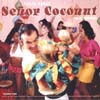 This isn't just a lame Hollywood sequel to a tacky but entertaining guilty pleasure, it's a part three of a series which should have been killed long ago. Uwe Schmidt (Atom‚Ñ¢, Atom Heart) and his gang of Chileans' style worked undeniably well in a humorous way with the Kraftwerk covers on El Baile Alem?. It made sense: Uwe being a German living in Chile and the rest being Chileans, a few who have spent time living in Germany. The vocalist maintained the robotic, inflectionless feeling of the original songs while the group kept to very strict rhythms. The output was something both entertaining and worth numerous listens. To hear it all over again with almost lifeless covers of popular 1970s and 1980s classics is simply laborious. It's a joke that just isn't funny any more.
This isn't just a lame Hollywood sequel to a tacky but entertaining guilty pleasure, it's a part three of a series which should have been killed long ago. Uwe Schmidt (Atom‚Ñ¢, Atom Heart) and his gang of Chileans' style worked undeniably well in a humorous way with the Kraftwerk covers on El Baile Alem?. It made sense: Uwe being a German living in Chile and the rest being Chileans, a few who have spent time living in Germany. The vocalist maintained the robotic, inflectionless feeling of the original songs while the group kept to very strict rhythms. The output was something both entertaining and worth numerous listens. To hear it all over again with almost lifeless covers of popular 1970s and 1980s classics is simply laborious. It's a joke that just isn't funny any more.
